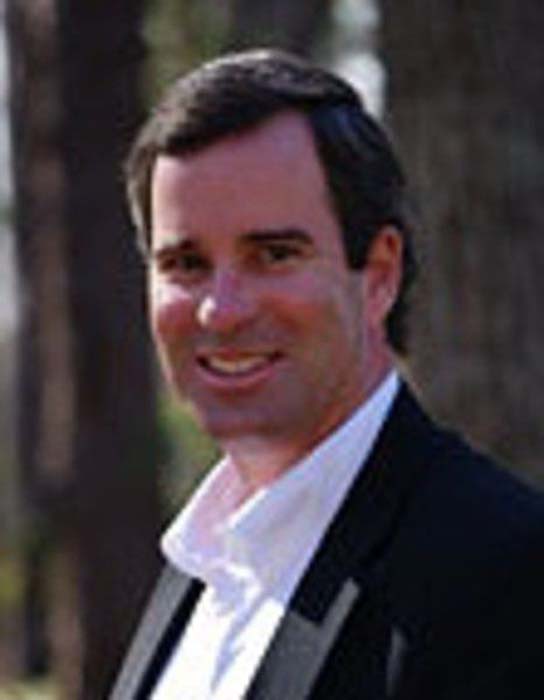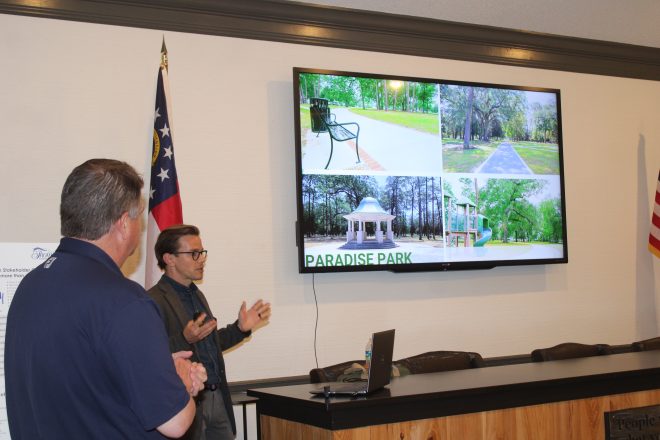Jimmy Doolittle’s daring raid on Japanese was 75 years ago today
Published 2:55 pm Tuesday, April 18, 2017

- Will Watt
It remains today one of the most daring missions ever of World War II. The bombing of the Japanese home islands on Saturday, April 18, 1942, by 16 B-25 medium bombers helped the morale of U.S. citizens and soldiers to soar following the brutal surprise attack on U.S. forces at Pearl Harbor on December 7, 1941.
On the 75th anniversary of what came to be known as The Doolittle Raid, it is important to look back at the event and the incredible courage shown by the men who participated.
Following President Roosevelt’s proclamation of war against Japan after the attack at Pearl Harbor, the U.S. war machine was scrambling to meet the incredible challenge ahead. Sure, men and women were signing up to help the war effort, but the attack had struck fear into the country with lookout posts being set up all along our coastlines on the Atlantic and Pacific. Uncertainty reigned while one man was devising a plan to strike back at Japan and send a message that they had indeed, “Awakened a sleeping giant,” as Japanese admiral Isoroku Yamamoto is quoted as saying following their successful strike at Pearl Harbor.
Lt. Col. James “Jimmy” Doolittle, of the U.S. Army Air Forces, was the right man at the right time to pull off this mission. With an engineering background already in hand, he entered the prestigious M.I.T. (Massachusetts Institute of Technology) and in less than three years of graduate work, obtained a master’s and doctoral of science in aeronautical engineering, which was no small feat.
Doolittle had achieved great fame first as an air racer and then held several distance records in the day as the design of airplanes began to evolve at a rapid rate in the 1920s and 1930s.
He is reported to be the first person to perform an outside loop. Additionally, what he considers, “The most important thing I did, ever,” Doolittle began work at the Full Flight Laboratory at Mitchell Field, Long Island, New York, with the aim of developing blind-flying equipment — now known as instrument flying — and procedures. Through his job at Shell Oil Company, he also played a crucial role in developing high-octane fuel used in U.S. aircraft, which gave allied aircraft a slight edge over enemy aircraft.
In planning the secret attack, Doolittle reflected later in his life, “The Japanese had been told they were invulnerable … An attack on the Japanese homeland would cause confusion in the minds of the Japanese people and sow doubt about the reliability of their leaders. There was a second, and equally important, psychological reason for this attack … Americans badly need a morale boost.”
The mission required an aircraft that had a cruising range of 2,400 nautical miles with a 2,000-pound bomb load and be able to takeoff from the deck of a carrier. The B-25 was chosen and had to be heavily modified to hold nearly twice the normal fuel capacity. However, a B-25 had never been flown off of a carrier. Two B-25s were loaded aboard the carrier USS Hornet on February 3, 1942, and they successfully made it off the deck.
B-25 crews were given the chance to volunteer for an “extremely hazardous,” but unspecified, mission, and 80 men did. Following weight reduction modifications of the participating aircraft, which included mock gun barrels installed in the tail cone, the planes were flown to Eglin Field, Florida, on March 1, 1942, and mainly operated out of Wagner Field, an Eglin auxiliary field, due to its secluded location. The crews were trained for three weeks by naval aviators from nearby Naval Air Station Pensacola, in simulated carrier deck takeoffs, as well as low level and night flying, low altitude bombing and over-water navigation.
The 16 planes and crews were loaded on the USS Hornet on April 1 and began the journey. However, on April 18, still 650 nautical miles from its target, the task force was sighted by a Japanese patrol boat, which was quickly sunk by the USS Nashville, but not before the patrol boat radioed a warning to Japan.
The decision was made to launch the bombers immediately — 10 hours early and 170 miles farther away from Japan than planned. Wrapping to protect the planes’ engines from the salt water was quickly removed and the five-man crews climbed aboard their planes and started engines.
Although none of the pilots had ever launched from a carrier, their training at Eglin paid off, as all 16 aircraft launched successfully and flew at wave-top level to avoid radar detection. Arriving around noon over Tokyo and its other targets, they climbed to 1,500 feet and bombed 10 military and industrial targets. Some of the planes encountered light antiaircraft fire and a few enemy fighters, but none of Doolittle’s group were shot down.
It was now time to head to China. Fifteen of the 16 bombers followed Doolittle’s plan, but one bomber was extremely low on fuel and instead headed to Vladivostok, Russia. This crew’s B-25 was confiscated, and the crew interned for 13 months, but later escaped by bribing a smuggler to help them cross the Iranian border and reach the British consulate.
Two raiders drowned, and one was killed after parachuting out over China. Three were captured and executed by firing squad by Japanese troops in China; one died of malnutrition while in captivity, and four survived the rigors of POW life in Japan.
In retrospect, the mission accomplished several firsts. Besides conducting the first offensive air mission against the Japanese home islands, the raid was the first joint war action by the U.S. Army Air Forces and the Navy and they were the first — and last — to launch heavily loaded, land-based bombers from a carrier deck on a combat mission.
Doolittle fully expected to be court-martialed for losing all of the planes following the attack, but once back in the United States, Lt. Col. Doolittle was promoted to general, skipping the rank of colonel. Additionally, President Franklin Roosevelt awarded him the Medal of Honor, and each crew member received the Distinguished Flying Cross.
Although the physical damage to Japan was minimal, militarily and strategically, the humiliated Japanese military machine was forced to change its plans for conquering the Pacific with their attack on Midway being undertaken just two months later — an attack that cost the Japanese four aircraft carriers, a heavy cruiser and about 200 aircraft. The Japanese Navy never recovered.
Lt. Col. Richard Cole, who served as Doolittle’s co-pilot, is the last surviving member of the Doolittle Raiders. At 101, he clearly remembers parachuting out of his bomber at night and in the rain as it ran out of fuel. His chute got caught in a tree and left him dangling above the ground. He reunited with Doolittle the next day. He stayed in China and Burma, flying supply missions over the Himalayan mountains between India and China.
“Knowing that we did the mission and did it like it was supposed to be done, we felt pretty good about it,” Cole said in a recent interview.
Thomasville resident Frank Sims, himself a member of the U.S. Army Air Forces in World War II, said of the raid, “That showed them that we could come.”
As one looks back at the mission and takes into account the many aspects that went into the planning, training and carrying out of the attack, it stands out as one of the most daring acts of courage in World War II.





